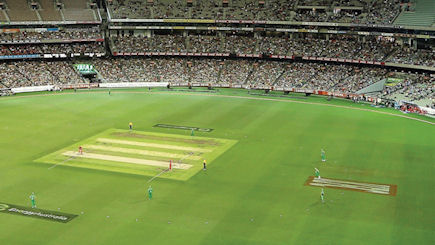This article first appeared in the Jan/Feb 2015 issue of World Gaming magazine.
Whether you know much about the sport or not, the upcoming cricket World Cup will be the biggest sporting event on the planet in 2015 when it comes to total viewing numbers. It will also be a huge deal for sportsbooks and bookmakers across the globe. With billions of dollars set to change hands over the next few months, WGM is giving our readers an early edge with our complete World Cup preview looking at the main contenders, which players to watch and of course who to bet on!
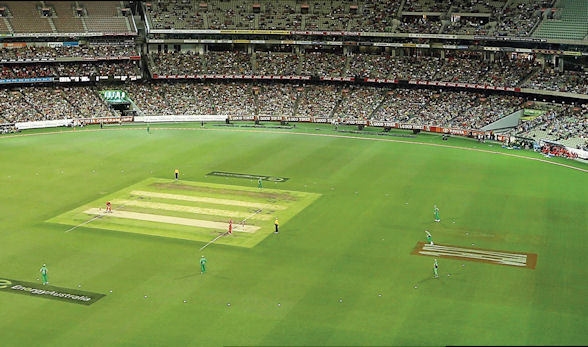
The Cricket World Cup. A game that remains largely undiscovered throughout much of Asia, cricket is nevertheless one of the most watched sports on the planet – thanks largely to its fanatical support in India where an estimated 400 million people tune in whenever the national side is playing. In fact, did you know that cricket’s World Cup is the third most viewed sporting event on the planet behind only the FIFA World Cup and the summer Olympics?
Four years ago, when traditional rivals India and Pakistan played one another in the 2011 World Cup semi-final, it is estimated that a billion people tuned in globally – so as you can see it’s sort of a big deal.
Likewise, billions of dollars are wagered on the World Cup when it comes around every four years. In India, where betting on sports is illegal, underground bookmakers have seized the opportunity with as many as 3,000 operating at any one time – turning over an estimated HK$30 billion during the last World Cup alone.
But there are no such concerns elsewhere with legal cricket betting proving hugely popular among punters in the sport’s traditional strongholds of England, Australia and South Africa as well as in Sri Lanka. Savvy sports bettors throughout Europe and across America have also picked up on the opportunities cricket provides to those who know what they are doing.
The key is to wade through the multitude of markets to get to where the real value is. While cricket offers more exotic options than you could count on 10 hands – great fun for your casual punter but not so profitable for the rest of us – the standard head to head and futures markets are a far more attractive proposition.
So let’s take a detailed look at the main protagonists of the 2015 Cricket World Cup.
THE TEAMS
The 2015 Cricket World Cup will be played in Australia and New Zealand, starting on 14 February and finishing with the final on 29 March. It features a total of 14 teams split into two pools of seven as follows:

Although there are 14 teams competing, the truth is that only eight of them are a realistic hope of lifting the trophy with Bangladesh, Afghanistan, Scotland, Zimbabwe, Ireland and the UAE making up the numbers. Scotland, Ireland, Afghanistan and the UAE join the International Cricket Council’s 10 full member nations at this World Cup after winning their way in through qualification, with Afghanistan competing in the tournament for the very first time. Although they will all benefit from the experience, none of them boast the quality to beat the big guns. Zimbabwe have also fallen well behind the top nations over the past decade, while Bangladesh are a rising power of world cricket but still have some way to go before they can be considered a contender. However, keep an eye on the Bangladeshis to cause at least one big upset at this World Cup.
The format of the 2015 World Cup sees each team play the other six sides in their Pool once, with the top four sides from each Pool then progressing to the quarter-finals where the knock-out stage begins. From here, the top ranked side in Pool A faces off against the fourth-ranked side in Pool B, the team ranked second in Pool A plays the team ranked third in Pool B and so on, with the winners progressing to the semi-finals, then the final where a champion will be crowned.
Time to take a look at the eight main contenders!
POOL A
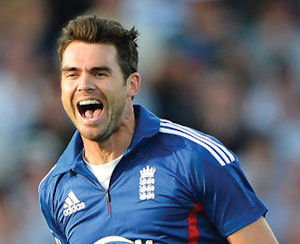
James Anderson
ENGLAND
England is the traditional home of cricket, having played the first ever Test match against Australia back in 1877 and formed the ICC alongside Australia and South Africa in 1909, yet they have never enjoyed any great success in the 50-over format of the game since its introduction in the 1970s. In fact, in 10 attempts they have never won the World Cup!
It’s worth noting, however, that England’s best result is a runner-up finish which they achieved the last time the World Cup was held in Australia and New Zealand back in 1992. The bouncy Australian and seaming Kiwi pitches will suit the Brits more than they do the sub-continental teams such as India and Pakistan, however it must be said that their preparation has been nothing short of disastrous.
The England Cricket Board has controversially decided to retain opening batsman Alistair Cook as captain despite his poor form of late and a record that shows five consecutive ODI series losses through November 2014. And the loss of two of their most destructive batsmen – Kevin Pietersen and Jonathan Trott – could leave them without the genuine match winner they need. Pietersen was kicked out of the national squad following their 5-0 Ashes loss to Australia last summer and is said to have been a destabilizing force on the team, but he has also been their highest run scorer in all forms of the game in recent years so he will be missed. Likewise, Trott was a prolific batsman at his peak before suffering a nervous breakdown during the Ashes and quitting the game altogether.
England remain an outside chance should the stars align but it would take a brave man to put a lot of money on them to win.
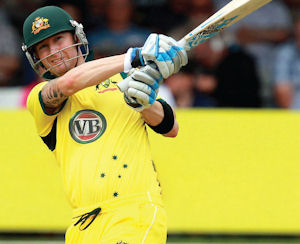
Michael Clarke of Australia
AUSTRALIA
No side boasts a World Cup record anywhere near as good as Australia’s. Four time champions, they embarked on a phenomenal run between 1999 and 2007 in which they not only won three consecutive World Cups but remained undefeated through both the 2003 and 2007 tournaments. By the time they were eventually beaten by Pakistan in a Pool game at the 2011 World Cup they had won 32 consecutive World Cup matches! It’s almost certain that record will never be surpassed.
This current Australian side is neither as dominant, nor as settled as the great Aussie teams of the past but they have been putting the building blocks together and on home soil they shape as a real force to be reckoned with. The hard, bouncy decks will be tailor made for their lethal left-arm bowlers Mitchell Johnson and Mitchell Starc, while they boast plenty of lusty hitting options in the shape of David Warner, Aaron Finch and Glenn Maxwell.
Provided they don’t suffer some sort of disastrous form slump, they must be considered a huge chance of going all the way in front of their home fans.
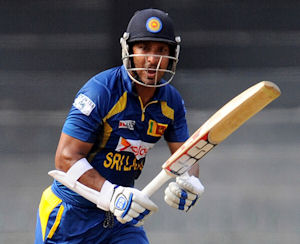
Sri Lanka’s Kumar Sangakkara
SRI LANKA
Expect Sri Lanka to be the team host nation Australia looks at as their most feared opponent in Pool A. One of the most consistent World Cup performers of the past two decades, the Sri Lankans came of age when they won the tournament in 1996 without losing a game. In four appearances since they have reached the final twice and the semi-finals once.
Can they do it again? There is no reason why not. They’ve been arguably the form team of 2014 in the shorter forms of the game with a number of ODI series wins, victory in the Asia Cup – a tournament played against India, Pakistan, Bangladesh and Afghanistan – as well as their much-celebrated success at the Twenty20 World Cup.
If there is one thing Sri Lanka knows it is how to navigate its way through a tournament but that should come as no surprise. With the likes of Kumar Sangakkara, Mahela Jayawardene and Angelo Matthews leading the batting and Lasith Malinga spearheading the attack they boast one of the most experienced sides at this World Cup.
They will expect to be challenging for top honors come the business end of the tournament.
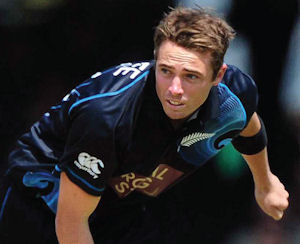
New Zealand strike bowler Tim Southee
NEW ZEALAND
Predicting exactly what New Zealand will produce at this World Cup is a bit like picking how many M&M’s it would take to fill the Venetian Macao – a wild guess at best. This once strong cricketing nation continues to produce plenty of raw talent but although they can beat anyone on their day, they typically lack the depth and consistency to go all the way. This is evidenced by the fact they’ve reached the World Cup semi-finals on six occasions without ever making the final!
Still, they shouldn’t be under-estimated given a middle order that has the potential to obliterate opposition attacks on its day. Led by veteran Brendon McCullum, the Kiwis boast some lethal ball strikers in the shape of Kane Williamson and a rejuvenated Ross Taylor. Get those guys firing at the same time and New Zealand will have to be taken very seriously.
Like Australia, the Kiwis can look forward to home ground advantage in this World Cup and do so without the same huge level of expectation that will greet their trans-Tasman rivals come the start of the tournament. You can currently find them paying anywhere from $7.50 to $10 to win and although the shorter prices look too tight, they could be worth a flutter if you can eke out better odds. In fact, if they can avoid a quarter-final showdown with South Africa we love their chances of at least progressing to the semi-finals.
POOL B
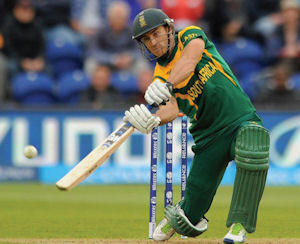
Faf de Plessis of South Africa
SOUTH AFRICA
One of the world’s top ranked teams alongside Australia and India, South Africa has never been better placed to end their international trophy drought than they are at this World Cup. Not only do they boast a squad that is both settled, balanced and full of experience, they also possess the world’s top two ranked ODI batsmen in AB de Villiers and Hashim Amla and the third ranked bowler in Dale Steyn.
On paper at least, it’s impossible to find any weaknesses in this Proteas squad. Their batting prowess is fearsome and their fast bowling trio of Steyn, Morne Morkel and Vernon Philander will relish the hard Australian pitches. Placed in a group against two sub-continental sides and the troubled West Indies, they will certainly expect to finish on top of Pool B.
But … there is always a “but” with the South Africans and it comes from their not so pleasant history of imploding at the worst possible moment – particularly when it comes to the World Cup. Most infamous is their 1999 semi-final against Australia when they needed just a single run to progress to the final with four balls remaining, only for panic to set in. First, Alan Donald was almost run out after advancing too far out of his crease – Australia’s throw missing the stumps by millimetres. Next ball, the unthinkable happened as Lance Klusener hit the ball straight and took off for the run, while at the other end Donald refused to budge! Australia couldn’t believe its luck as Klusener was run out and South Africa eliminated from the tournament.
Incredibly, it was a mathematical error that saw South Africa sent home from the 2003 World Cup after a rain-affected clash with Sri Lanka in their final group game. When cricket matches are interrupted by rain, the result is determined by a complicated formula known as the Duckworth-Lewis method which takes into account runs scored and wickets lost in calculating who holds the “lead” at any point during the match. If the game is called off due to rain, the side batting second must be ahead of the calculated “par score” at the time to win. So it was that as the rain started to fall in their 2003 clash, South Africa needed one run from the final ball of the 45th over to be ahead, but captain Shaun Pollock misread the chart and instructed his batsmen to simply avoid losing a wicket rather than look for the run. The players were called from the field moments later, the rain didn’t stop and South Africa, who needed to win to progress, missed the play-off spots by the narrowest of margins.
Can they finally put the ghosts of days past behind them in 2015?
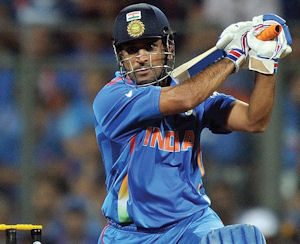
India captain MS Dhoni
INDIA
Defending World Cup champions India come to this tournament with a strong pedigree. Renowned as not only limited overs specialists but the undisputed financial superpower of world cricket, they will be spurred on by hundreds of millions of fans back home who will expect nothing less than a successful defence of their title. But can India become just the third country after the West Indies (1975 and 1979) and Australia (1999, 2003 and 2007) to go back-to-back?
Certainly their batting line-up is among the most feared in the world at this form of the game with four batsmen – Virat Kohli, Ajinkya Rahane, Shikhar Dhawan and Suresh Raina – ranking among the world’s top 20 ODI run scorers in 2014. Not to mention the destructive force that is captain MS Dhoni at his best.
But the argument against India winning is perhaps even more compelling. For starters, their bowling attack isn’t nearly as well rounded as their batting and it’s concerning that they rank last among the top eight sides when it comes to total runs conceded and runs conceded per wicket. They also boast a far from impressive record outside the subcontinent with a win ratio of just 38 percent against the other top sides since the last World Cup. When playing in Australia or New Zealand that percentage drops to a worrying 23 percent!
That’s not to say India can’t give this tournament a real shake, but at around $6 to go all the way there appear to be better value bets available.
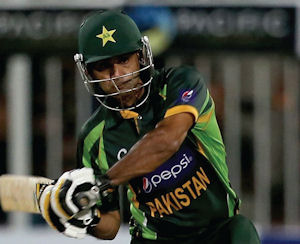
Mohammad Hafeez of Pakistan
PAKISTAN
Pakistan hasn’t been spoken about as a genuine contender to any great extent in the lead-up to this World Cup – probably because the pitches aren’t expected to suit them and the fact that most discussions of the sub-continental teams tend to focus on India first and the rest later. But guess what? The last time Australia and New Zealand hosted the World Cup some 22 years ago it was Pakistan who lifted the trophy in triumph! And if their inconsistent results of the past 12 months at all levels of the game were a concern, their thumping Test series win over the powerful Australians in October and November must have given them a huge confidence boost.
The problem with rating Pakistan’s chances is that they haven’t spent much time outside the sub-continent in any form of the game. It’s all very well to beat up on the Aussies on the UAE dustbowls they’ve been playing on where spin is king, but how will they fare when the Australian and South African quicks have the ball skimming past their throats at 150 miles per hour?
And of course there is the question of Younis Khan. By far the most prodigious batsman in the Pakistan set-up, the 36-year-old was dropped from their One Day squad after a 2-1 series loss to Sri Lanka in August. However a subsequent 3-0 ODI series loss to Australia in his absence and Khan’s incredible efforts against the same opponents in the Tests that followed with two centuries and a double century in his three innings – might have selectors changing their tune.
With him in the team alongside the likes of Mohammad Hafeez and rapidly improving fast bowler Wahab Riaz they might fancy their chances of surprising a few. And at anything from $10 to $13 they represent some pretty decent value at the top end.
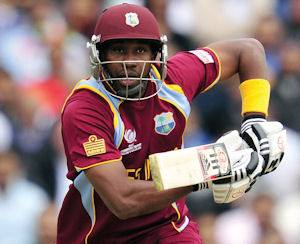
Dwayne Bravo
WEST INDIES
The West Indies are often known as everyone’s “second team”. They’re a side most people want to see do well, because the sheer talent and athleticism of their players is thrilling to watch. No other players in the world hit the ball as big, as hard and with such flair as Chris Gayle or Kieran Pollard, nor do any make the game look as easy as Dwayne Bravo does with either bat or ball in hand.
Yet their talents are wasted. The West Indies are a side plagued by inconsistency, a lack of serious depth and most problematic of all the seemingly endless conflicts between the players and the West Indies Cricket Board (WICB).
In fact, the entire future of cricket in the Caribbean is under a cloud at the moment after the players pulled out of their tour of India in October midway through the five-game ODI series due to discontent over the terms of their new Collective Bargaining Agreement. With a fifth ODI, a Twenty20 game and three Test matches still to come, the Board of Control for Cricket in India (BCCI) has not only cancelled all tours of its own to the Caribbean over the coming years – a huge financial blow to the WICB – it is also seeking at least US$43 million in damages for lost TV rights and sponsorship money. The West Indies simply don’t have the financial means to cope with either blow.
So where does that leave them for the World Cup? Who knows? No doubt the players and WICB will piece together some sort of makeshift deal to ensure their attendance – mainly because the players will want to be there – but it’s hard to see them being fully focussed on the task at hand. Let’s just hope a carefree attitude leads the likes of Gayle and Pollard to swing freely when at the crease.
ONE DAY INTERNATIONAL (ODI) CRICKET
The World Cup features the 50-over format of the game, also known as limited over cricket or One Day Internationals. This is because they are played through the duration of a single day – about seven hours of real playing time – compared with Test match cricket which runs for five days per game or Twenty20 cricket which is the shortest form of the game and takes only about three hours to complete. Test cricket is considered to be the true “test” of a cricketer’s skills, technique, consistency and concentration over a long period of time while Twenty20 is a power game with batsmen looking to score as many runs as possible, as quickly as possible. This also brings a much greater luck factor into the contest. One Day cricket sits somewhere in between – teams still need to score quickly but they must balance their scoring with preserving wickets. Much like a baseball innings concludes after three “outs”, each cricket innings concludes after 10 “outs” or “wickets” – and in ODIs each team has only one innings!
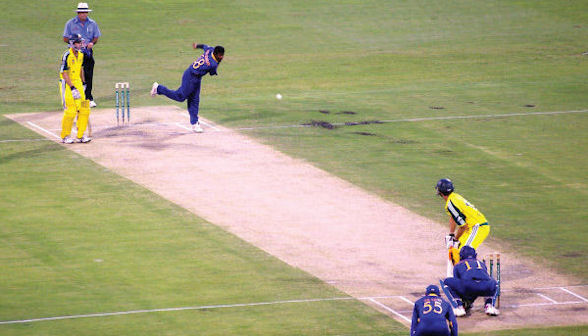
Australia and Sri Lanka have enjoyed a long rivalry in the short form of the game
CRICKET LINGO – Become an expert in two minutes
Pitch – The strip of dry grass in the centre of a cricket ground upon which the game is played. Pitches must be 22 yards (20.12 meters) long and 3.05 meters wide.
Stumps – The three wooden sticks placed into the ground at each end of the pitch.
Bowler – Like a pitcher in baseball, a bowler is the player that delivers the cricket ball to the batsman. The two main types of bowlers are fast bowlers – who bowl the ball as quickly as possible – and spin bowlers who bowl much slower but try to deceive the batsman by making the ball spin when it bounces on the pitch.
Crease – These are the straight lines painted across each end of the pitch, between the stumps. The distance between the stumps and the “popping” crease at each end is 122 cm. The “popping” crease serves as a marker for both the bowler and the batsman. The bowler’s front foot must not completely step over the “popping” crease as he releases the ball, while the batsman must stay behind or “in” the crease in order to avoid being “run out” when the ball is deemed to be in play. Just like a batter in baseball is given out if the ball reaches the baseman before the running batter does, in cricket a batsman is out if a fielder hits the stumps with the ball before the running batsman reaches the “popping” crease.
Run – The scoring is calculated in runs. If a batsman hits the ball to the boundary surrounding the ground he scores four runs. If he hits it over the boundary on the full (without touching the ground) he scores six runs. If the ball doesn’t reach the boundary the batsman can literally run to the other end of the pitch (swapping positions with his batting partner). For each length of the pitch the two batsmen complete before the fielders return the ball, the batting team scores one run.
Wicket – Known as an “out” in baseball. Each batting innings comes to an end when there have been 10 “outs” or in cricket terms the side has lost 10 wickets. Players can lose their wicket by hitting the ball and being caught on the full by a fielder, by missing and having the ball hit the stumps, by being “run out” or Leg Before Wicket (LBW) when the ball strikes the padding on their legs and the umpires deem it would have hit the stumps.
Over – A bowler is allowed to bowl six deliveries before play changes to the opposite end of the pitch and another bowler bowls his six deliveries (also known as “balls”). Play then returns to the original end where the previous bowler can bowl six deliveries (or be replaced with a different bowler altogether to bowl six deliveries). These groups of six deliveries are known as “overs”, so a 50-over match means that each innings contains 300 legal deliveries. Non-legal deliveries such as wides and no-balls must be re-bowled.
Swing – A special skill employed by some fast and medium speed bowlers whereby they shine one side of the ball so that it swings through the air either in towards the batsman or out away from him, making it trickier to judge.
Reverse swing – For reasons best known by aerodynamic experts and astro-physicists, when a cricket ball reaches a certain point of wear and tear it naturally starts swinging in the opposite direction to previously. In other words, when the ball is new and a right-handed bowler holds the shiny side to the inside, the ball will swing out and away from a right-handed batsman. But eventually, even though the bowler still holds the shiny side to the inside, the ageing ball will start to swing into the batsman instead
Death bowling – In 50-over and 20-over matches, death bowling refers to the final few overs of an innings where batsmen are trying to score as many runs as possible, as quickly as possible for their team to boost the team score. Because the batsmen are at their most attacking here, bowling at the “death” is a specialist skill where the bowler’s main task is to limit the number of runs the batsmen score.

PLAYERS TO WATCH
Mitchell Johnson (Australia)
It’s hard to believe that only a few short years ago, Mitchell Johnson was on the outer when it came to the national side – considered far too wayward and inconsistent to hold a regular place in the squad. A few small tweaks and one final opportunity thanks to injuries to other players saw Johnson return for last year’s Ashes series against England where he terrorized the English batsmen with his pace and aggression. So scary was his bowling that England’s two best batsmen were reduced to mere spectators with Jonathan Trott heading home an emotional wreck and Alistair Cook a complete shambles each time he came out to bat. Johnson also did the same to South Africa earlier this year – forcing their captain Graeme Smith into retirement and twice injuring all-rounder Ryan McLaren with brutal short balls. He is without doubt the one bowler in world cricket right now that batsmen genuinely fear.

The Melbourne Cricket Ground (MCG) will host the 2015 World Cup final
Glenn Maxwell (Australia)
Nicknamed “The Big Show” because he likes to put on a show for the crowd with his huge hitting, Maxwell is a limited overs specialist. He is actually a handy spin bowler in the shorter versions of the game, however it is his batting that wins matches for Australia and the various T20 sides he represents around the world from time to time. In fact, so sought after has he become in the shorter forms of the game that he was the single most expensive player at the 2013 Indian Premier League (IPL) auctions – where franchises bid for the players they want that season – with Mumbai Indians paying US$1 million for his services. In the 2014 IPL, playing for Kings XI Punjab, Maxwell was named man of the match on four separate occasions with scores of 95 runs from 43 balls, 89 from 45, 95 from 43 again and finally 90 from just 38 deliveries. If he gets going at this World Cup his home crowds can look forward to plenty of catching practice in the stands.
AB de Villiers (South Africa)
The world’s top ranked batsman in both Tests and ODIs, AB de Villiers is known for his grace, poise and timing rather than the raw power usually associated with the shorter forms of the game. Showing calm under pressure appears to be the key to de Villiers’ success and he has demonstrated time and again that he is South Africa’s go-to man when it matters most. Named captain following the 2011 World Cup, the 30-year-old boasts 18 ODI centuries, 39 half centuries and a remarkable average of over 51 – not bad given his strike rate of around 95 runs scored per 100 deliveries faced! In fact, even though he isn’t renowned as a huge hitter, de Villiers is a deceptively fast scorer and boasts the seventh fastest ODI century of all time off just 58 balls against India in 2010. He could be the man to finally lead South Africa to glory.

Dale Steyn (South Africa)
Until Mitchell Johnson stormed back onto the international cricketing scene last year, it was South Africa’s own menacing fast bowler Dale Steyn who had long been considered the most dangerous quick in the world. Extremely fast and aggressive, he combines his pace with some serious outswing when bowling with the new ball but also has the ability to make the ball reverse swing when it gets older – a rare skill that sees the ball swing back in to right handed batsman at the last minute. This makes Steyn not only among the world’s top opening bowlers but also the most effective “death” bowler in ODI cricket – regularly coming back into the attack during the final overs when the batsmen are looking to score quick runs.
Chris Gayle (West Indies)
If there is one player that fans from all nations flock to see whenever he strolls to the crease, it is West Indian opening batsman Chris Gayle. This tall, muscly and extremely powerful man-mountain is surely the strongest hitter of a cricket ball in the world and when in form it’s quite a sight to see the ease with which he can dispatch bowlers of every ilk into the grandstands. And when he really puts his weight behind it? We’ve lost count of the number of times he has sent the ball flying out of various stadiums around the world, requiring the umpires to find a suitable replacement! It is because of this match-winning ability that Gayle is one of the most sought after players in T20 cricket and also one of a handful of West Indian players with the ability to lead his side to glory at this World Cup. We can only imagine the spectacular scenes if he was to repeat his performance from a T20 game in the Indian Premier League early last year when he blasted 175 from just 65 balls – reaching his hundred in just 30 deliveries! To this day, that innings stands as a record for the fastest century ever scored in any form of cricket!

Virat Kohli (India)
India has typically struggled in Australian conditions where the pitches are much faster and with more bounce than the slow, turning pitches they are accustomed to back home. Not so Virat Kohli, who showed both a wonderful ability to adapt and a stronger mental capacity than any of his teammates during the side’s disastrous Australian tour of 2011-12. Although India lost the Test series 4-0 and failed to reach the final of the three-team ODI series, Kohli was India’s top scorer in both and was also the only Indian player to score a century all tour with 116 in the fourth Test and 133 not out in their final ODI game against Sri Lanka. The 25-year-old also has pedigree on the World Cup stage. He is one of only two players to captain India to victory in an Under-19s World Cup – a feat he achieved in 2008 – and he was one of India’s finest performers when they won the big one on home soil in 2011. An attacking batsman with solid technique, he is being groomed to take over from MS Dhoni as national captain in the coming years and another strong performance at this tournament would cement his standing in that regard.
Ross Taylor (New Zealand)
Renowned for his overtly attacking style and ability to score quick runs, it was at the last World Cup four years ago in a match against Pakistan that New Zealand top order batsman Ross Taylor enjoyed his finest moment. On his way to a career high score of 133 not out, he finished with a flurry with a staggering 55 runs off the last 13 balls he faced to lift the Kiwis over 300. Although he lost the national captaincy in 2013 due to his poor relationship with coach Mike Hesson, Taylor looks far more at home without the extra responsibility. With the freedom now to focus solely on his batting he will be looking to welcome New Zealand’s opponents to the “Shaky Isles” by dispatching their bowlers to and over the boundary. While many batsmen new to the conditions tend to struggle with New Zealand’s seaming pitches, Taylor revels in them. Expect fireworks.

Lasith Malinga (Sri Lanka)
A crowd favorite wherever he travels, Malinga is impossible to miss with his curly mop of hair dyed partially blond and his famous slingshot bowling action that has left countless batsmen bemused. Such an unusual action makes Malinga extremely difficult to predict and combined with his sheer speed he has become one of the world’s leading “death” bowlers as he fires the ball in at the stumps. He is a limited over specialist, having retired from Test cricket some years ago, and his results suggest that decision was a good one. He is the only player to boast three ODI hat-tricks – three wickets in three consecutive deliveries – and the only one to have taken four wickets in four consecutive deliveries after ripping through South Africa at the 2007 World Cup. Malinga was a key man for Sri Lanka in that tournament, taking 18 wickets at a brilliant average of 15.77 runs per wicket as he guided them to the final. If he produces similar form this time around another deep run is on the cards for Sri Lanka.

